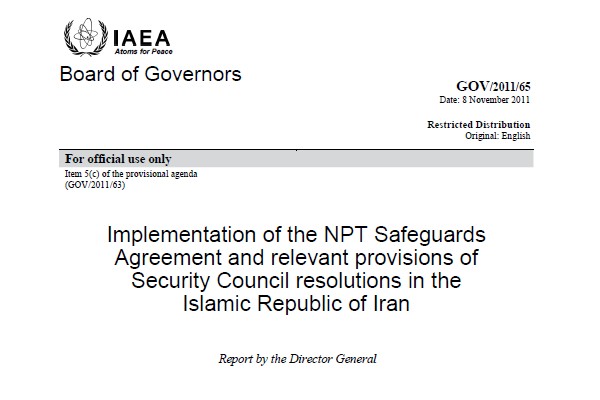IAEA Report on Iran
Edited by Andy Ross
The International Atomic Energy Agency finds that Iran made concerted
attempts between 1998 and 2003 to develop a nuclear bomb. The IAEA report
provides new detail about Iran's secret nuclear weapons program.
Iran
has built at least two facilities for fuel enrichment, which since 2005 have
both been generating 20% enriched uranium, in defiance of UN Security
Council demands for suspension. If the current stockpile was further
enriched, it would be enough for two weapons within about two years,
according an IISS analysis.
The IAEA found evidence that Iran was
developing components for nuclear weapons. These include sophisticated
detonators and "multipoint initiation systems" for uniform compression of
the nuclear material. The dimensions of the hemispheres and detonators that
Iran tested exactly matched those of the payload chamber of its Shahab 3
missile system. Researchers performed many tests to ensure that a bomb could
survive blast-off and flight.
Iran was using tungsten as a simulated
nuclear explosive. Tungsten can be heated and compressed just like nuclear
fuel to form a molten fluid. A large and undeclared cylindrical vessel was
found where up to 70 kg of high explosives could be safely detonated and
contained in experiments to model compression and detonation.
Iran
has been using sophisticated computer programs to simulate and model shock
waves in metal, neutron flows, and the effects of shock compression. That's
just the sort of data needed to design and build a warhead. All this
research on so many devices essential for nuclear weapons leads the agency
to express "concerns about possible military dimensions to Iran's nuclear
program".
IISS Commentary
International Institute for Strategic Studies
Edited by Andy Ross
The latest IAEA report shows how Iran established a comprehensive program to
develop all the key technologies for an implosion-type nuclear weapon for
its ballistic missiles.
Most of the reported weapons development work
took place between about 1998 and 2003, although some activity may be
continuing today. In late 2003 Iran suspended weapons development on fears
of a U.S. attack after exposure of its secret enrichment activities.
Western governments believe that Iran cannot make a dash to produce nuclear
weapons without the IAEA knowing in time. The IISS concludes that Iran would
need about two years to produce a nuclear weapon, but it would make no sense
for Iran to risk massive retaliation to do so.
The report says Iran
received foreign help for weaponization. A former Soviet expert spent six
years in Iran lecturing on the topic. Iran also received bomb designs from
the A.Q. Khan network and sought foreign training on computer modeling of
nuclear chain reactions from "an institute in a nuclear-weapon state".
Powerful figures in Iran realize that the Islamic Republic needs to act.
If Iran can be persuaded to resume talks, this might reduce pressure in
Israel for military action.
IAEA Report

